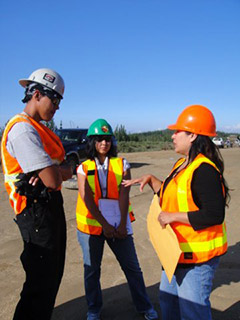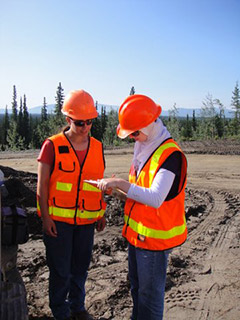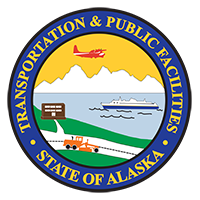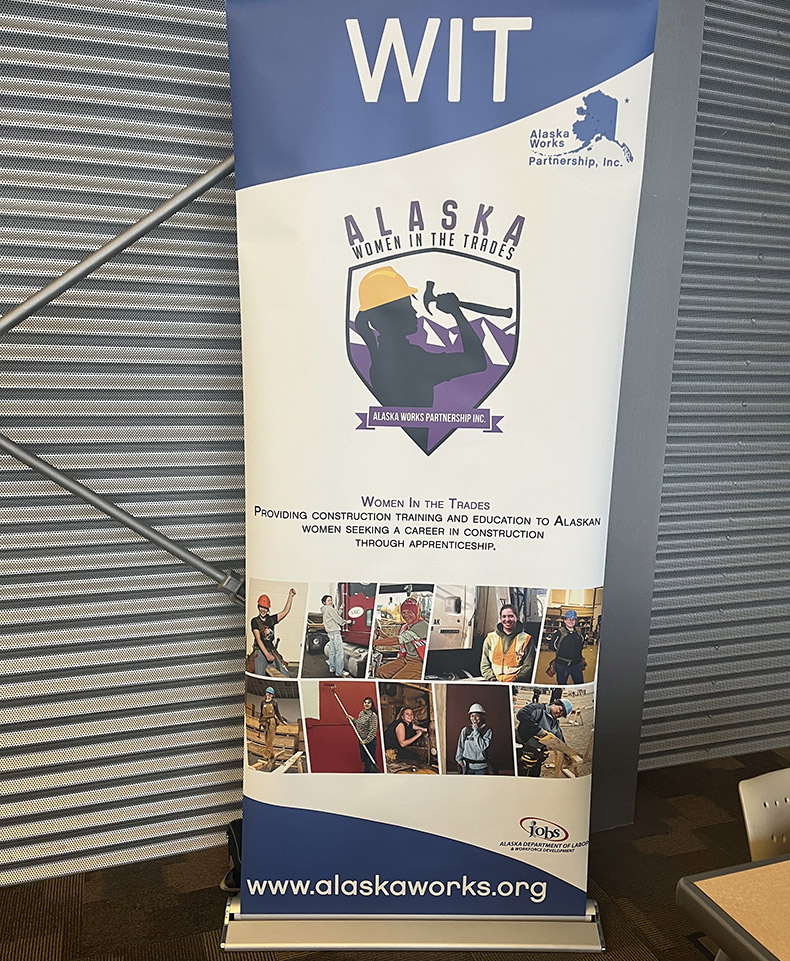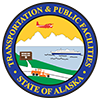On the Job Training (OJT)
About On-the-Job Training (OJT) Program
The Alaska Department of Transportation and Public Facilities (DOT&PF) has established the On-the-Job Training (OJT) Program as a prerequisite for ongoing federal-aid highway construction project funding, in accordance with U.S. DOT regulations 23 CFR Part 230, Subpart A, Equal Employment Opportunity on Federal and Federal-aid Construction Contracts. Acknowledging the importance of training women and minority workers in the construction trades, the program aims to achieve the following objectives:
- Provide training and improve the skills of women and minorities so that they have the opportunity and access to higher paying skilled trade jobs and achieve journeyman status; and
- Broaden the labor pool to meet the projected future labor needs in the construction industry
Authority:
- 23 CFR Part 230, Subpart A
- Special Provision Section 645: Training Program
- CE Directive - Special Provision S 99, Section 645 Training Program for Contracts with FHWA Funding
- Alaska Construction Manual
Brochure:
Required Forms & Reporting:
- 25A-310 Training Program Request
- 25A-311 Training Utilization Report
- 25A-312 Apprentice Employment Report
- 25A-313 Monthly Training Report
25A-310 Training Program Request
In the event that the contractor opts to implement a training program of their own design, they are required to seek approval by submitting the program through the 25A-310 Training Program Request to the Civil Rights Office. Additionally, they must furnish a copy of the Training Overview before the contract is finalized. Utilizing the provided Training Request Form, the Contractor is obligated to specify the quantity of trainees intended for each designated classification, outline the duration of training sessions, propose the commencement schedule, disclose Employer Training Information, detail any Third-Party Related Instruction, list Required Certifications for the Position, and provide a breakdown of OJT Wages based on a journey scale. The completion of the form necessitates careful review and signatures from both the Contractor and the Civil Rights Office OJT Coordinator.
In the event that the contractor opts to implement a training program of their own design, they are required to provide each trainee written evaluation reports indicating capability level reached. The area in which the trainee did not advance in level from its initial starting capability, the Contractor will attach documentation as part of the closeout evaluation which explains the reason a higher capability was not reached.
25A-311 Training Utilization Report
If Contractor is using training program approved by the USDOL/OA then they will need to submit Form 25A-311 Training Utilization Report which indicates the training program to be used, the number of apprentices/trainees to be trained in each selected classification, the number of hours of training to be provided, and the anticipated starting time for training in each of the classifications.
Training must begin within 2 weeks of the anticipated start date(s); unless otherwise authorized by a Directive. Such authorization will be made only after submission of documentation by the Contractor, and approval by the Engineer, of efforts made in good faith which substantiate the necessity for a change.
25A-312 Apprentice Employment Report
This form is required to be submitted before each apprentice or trainee is hired or rehired for the construction season. Contractors are responsible for completing the form, which includes project details, apprentice/trainee particulars, job classification, starting wage, percentage of Journey Scale, employee status, gender, and ethnicity/race. The form must be signed by an authorized company representative. Following completion, it is sent to the Regional Contract Compliance Liaison (RCCL) for approval and signature, and then forwarded to the OJT Coordinator to indicate the hire. If the Contractor is utilizing a training program sanctioned by the USDOL/OA, they will be required to furnish supplementary documentation. This includes the Dispatch Form from the Union, specifying apprentice or trainee job classification, the percentage of training completed towards journeyman status, report date, time, and location, as well as a breakdown of wages.
There will be no payment for training hours prior to approval of this completed report by the DOT&PF project engineer. It is not required that an apprentice or trainee be continuously employed for the duration of the contract. However, at the beginning of each season a new form 25A-312 needs to be completed and approved. No employee shall be employed for credit as an apprentice or trainee in a classification in which that employee has previously worked at journey status or has previously completed a training course leading to journey status.
25A-313 Monthly Training Report
The Contractor is obligated to maintain records and submit periodic reports detailing the progress of each apprentice or trainee, utilizing the 25A-313 Monthly Training Report. These reports should include project details, apprentice or trainee demographics, such as gender, ethnicity, or race, the approved date of the 25A-311 Form, start date indicated on the 25A-312 Form, and the monthly accumulated hours throughout the project duration. Additionally, the Contractor must specify if any apprentice or trainee has ceased work or been terminated and provide the reason for departure via email. Signed forms are to be forwarded to RCCL by the 15th of each worked month for review, then to the Civil Rights Office OJT Coordinator.
In cases where an apprentice/trainee hasn't completed the required work hours, the Contractor must explain the reason via email. They have the option to re-hire for the same classification to fulfill any outstanding work hours necessary.
Paperwork Submission:
- Submit all paperwork to DOT.CRO.ProjectsDocs@alaska.gov
Payment Authority:
Overview of OJT Training Programs:
The main goal of the OJT program is to advance minorities and women towards journey status through training and upgrading initiatives. To fulfill the training obligations outlined in Special Provision Section 645 of DOT&PF contracts, contractors have the option to select from two available programs.
- USDOL Apprentice Program
- Alaska DOT&PF Trainee Program
- Minimum qualifications the trainee
must possess
- Training Schedule - Each area of the schedule should contain specific information, including the number of hours allotted.
- Orientation & Observation (introductory unit to include construction basics, traffic flow, basic skills, crafts involved on project, etc.)
- Care and Maintenance/Special Preparations (list of basic skills and activities which prepare the trainee(s) for maintenance and care of tools/equipment required in this job classification
- Applied Techniques and/or Methods (include manipulation of tools/equipment, patterns or processes involved, coordination with other equipment and/or crafts, etc.)
- Actual Application/Operation (specify the activities and the general order in which they will be taught/practiced where the trainee applies the knowledge learned in the items listed above)
- OPTIONAL - Related off-site
instruction
- Wages - Trainees will be paid prevailing
Davis-Bacon as indicated:
- First half of the training period - fringe benefits plus at least 60 (but less than 100) percent of the appropriate minimum journey rate specified in the contract
- Third quarter of the training period - fringe benefits plus at least 75 (but less than 100) percent of the appropriate minimum journey rate specified in the contract
- Last quarter of the training
period - fringe benefits plus at least 90 (but less than 100)
percent of the appropriate minimum journey rate specified
in the contract
- Evaluation - The contractor will provide a documented evaluation of the trainee(s)' performance on the job upon completion of each item listed in the Training Schedule above.
US Department of Labor
Office of Apprenticeship
Formal Apprentice Program
The US Department of Labor (USDOL) has a registered apprenticeship program. This program is administered through the Office of Apprenticeship Training, Employer and Labor Services (OATELS), also known as the Bureau of Training and Apprenticeship (BAT). A registered apprenticeship program is a formalized, structured training program combining on-the-job training and related technical instruction in which paid employees receive practical and technical training in a highly skilled occupation. For more information on formally registering an apprenticeship program with USDOT/OATELS/BAT please contact the local office at:
US Department of Labor
Office of Apprenticeship Training, Employer
and Labor Services
605 West 4th Avenue
Room G30
Anchorage, AK 99501
www.apprenticeship.gov
Alaska DOT&PF Trainee Program
Approved Trainee Program
Contractors desiring to use the Alaska Department of Transportation and Public Facilities (DOT&PF) program must develop a training schedule (Form 25A-310) for each job classification they intend to use on a project. The training program(s) must be approved prior to award of the contract. Training programs less than 500 hours will not be approved. Once the employee completes the training with the contractor, they must receive journeyman wages with that contractor.
The training program must be written and at a minimum include (see form 25A-310):
A copy of the approved training program will be given to the trainee(s) as well as a copy of the evaluations. Once the trainee completes the contractor's program, they are considered a journeyman with that Contractor. Completion of the contractor's training program does not supercede the overall training program requirements established by the US Department of Labor, Office of Apprenticeship Training, Employer, and Labor Services (also known as Bureau of Apprenticeship and Training) for each job classification or related craft.




